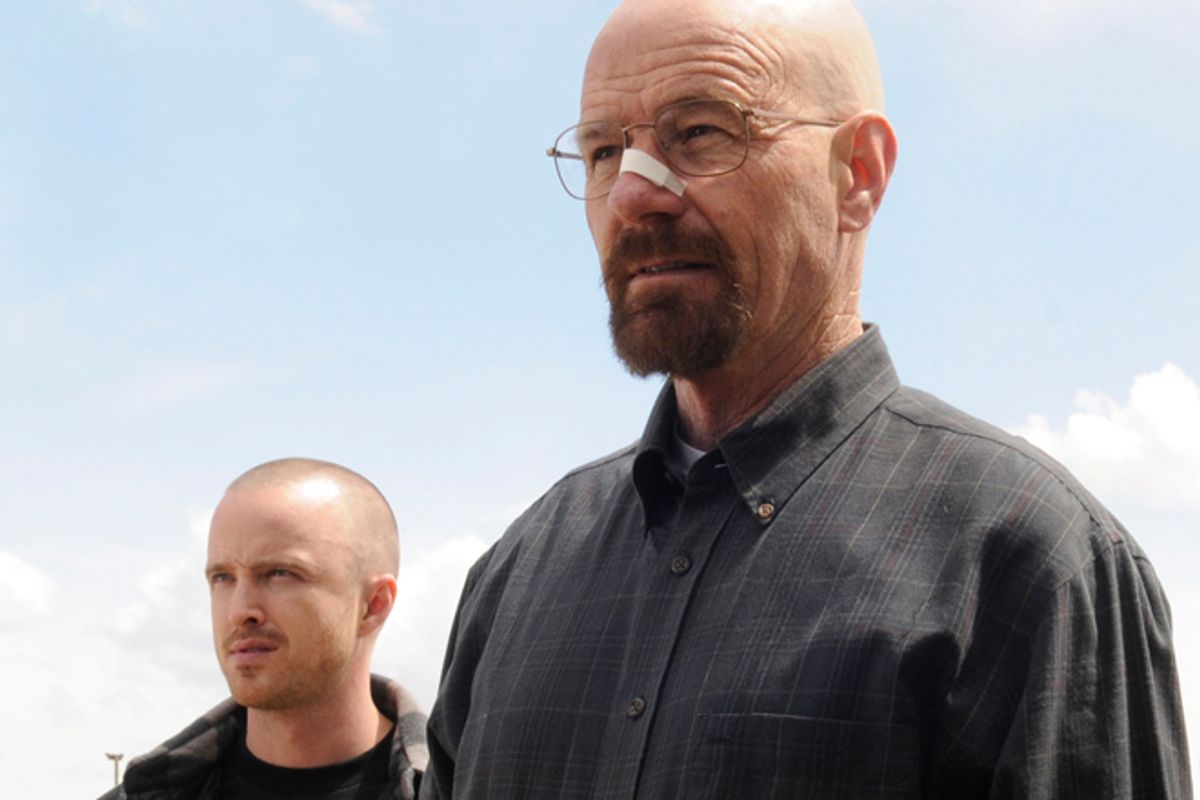Fans of the critically-adored Breaking Bad, the story of a high-school chemistry teacher who becomes a Southwest narcotics kingpin, know that Sunday night’s cliffhanger turned on a successful scheme to export methamphetamine from New Mexico to the Czech Republic. It’s fiction. Most studies of global drug use suggest Europeans don’t use methamphetamine in large numbers.
 Why not? What do Europeans know about keeping meth use at bay, while North America gets slammed by the drug, straining health systems, clogging the courts, and converting rural homes into chemical bombs?
Why not? What do Europeans know about keeping meth use at bay, while North America gets slammed by the drug, straining health systems, clogging the courts, and converting rural homes into chemical bombs?
Nothing. Europeans just don’t like the stuff.
“It’s a very American question, isn’t it? Why hasn’t something happened?” said Laurent Laniel, an analyst with the European Monitoring Centre for Drugs and Drug Addiction, in Lisbon. “In Europe we don’t ask ourselves this.”
Breaking Bad‘s scriptwriters have done their homework. The Czech Republic is the exception to Europe’s meth vacuum, and the reason is the Cold War. It wasn’t just Levis and soda that couldn’t get over the Berlin Wall." During communist times, it was very difficult to introduce drugs into the country, so people who wanted them made it themselves,” said Laniel. Soviet economic policy rooted different industries around its satellite states, and one of the largest factories producing ephedrine—a key ingredient in methamphetamine—was located near Prague.
Twenty years later, Prague is still the center of Europe’s meth trade by a large margin. The EMCDDA’s annual Report on the Drugs Problem in Europe, which is the most-widely cited study of European drug use each year, identified 342 hidden labs making the stuff in the Czech Republic in 2009, more than anywhere else in Europe. That was down from more than 400 the year before, reflecting greater police resources devoted to busting the labs. From 2008 to 2009, the latest figures, the number of “kitchen-size” European meth labs located and dismantled increased by 22 percent.
The supply appears only slightly affected. A gram of meth costs 10 Euros, about $13, in Eastern Europe. Cocaine, which gets smuggled in from South America, is 60 a gram. Laniel suspects there just isn’t demand.
“There’s no structural barrier to creating supply. It’s already there. We already have people who know how to do it. We have the precursors.” The Schengen Agreement, which in part erased visa requirements and most border checks between 25 European countries, makes it exceptionally easy to smuggle anything (or anyone) across Europe. But it doesn’t happen with meth—you won’t see Czech drugs showing up in Belgium.
In part, ironically, American news and entertainment’s high profile on the continent—shows like Breaking Bad—seem to have soured Europeans on the stuff. “Cocaine certainly has a better image than meth” in Europe, said Laniel, citing images of meth casualties in American movies.
A more subtle answer also has roots in Hollywood’s treatment of the drug trade, he argued. Though we like to assume large syndicates run the drug business, a small meth gang can compete. That none do is probably telling. The obstacles in Europe are the same ones anti-hero Walter White faces: building a distribution network, learning to bribe the police, and getting ahold of the right chemicals. The users themselves are locavores. The drug is synthetic, so you don’t need poppies from Afghanistan or coca from Bolivia; rather than duck DEA agents at an American airport, it’s a lot safer for the would-be European meth profiteer to just make the stuff in a Paris bathtub. The circumstantial case suggests that if Europeans wanted it, they’d have it.
Even in Prague, most don’t: EMCDDA’s figures show Breaking Bad‘s estimate of the drug’s penetration among Czechs, 5 percent, was vastly overstated—only .3 percent of Czech adults have tried the drug.
What they got right was showing how meth is a very American-style small business, not a vast conspiracy that easily shifts to new markets.
“Even if you’re not Heisenberg, you can make some pretty decent meth. You can imagine a bunch of guys, one of them probably a PhD student in chemistry, making a kilo, which is a lot of meth,” said Laniel. ”You don’t necessarily have to be a big organized gang. That’s part of the story in America. It’s not just the Mexican mafia. It’s a bunch of farmers in Minnesota.”

Shares